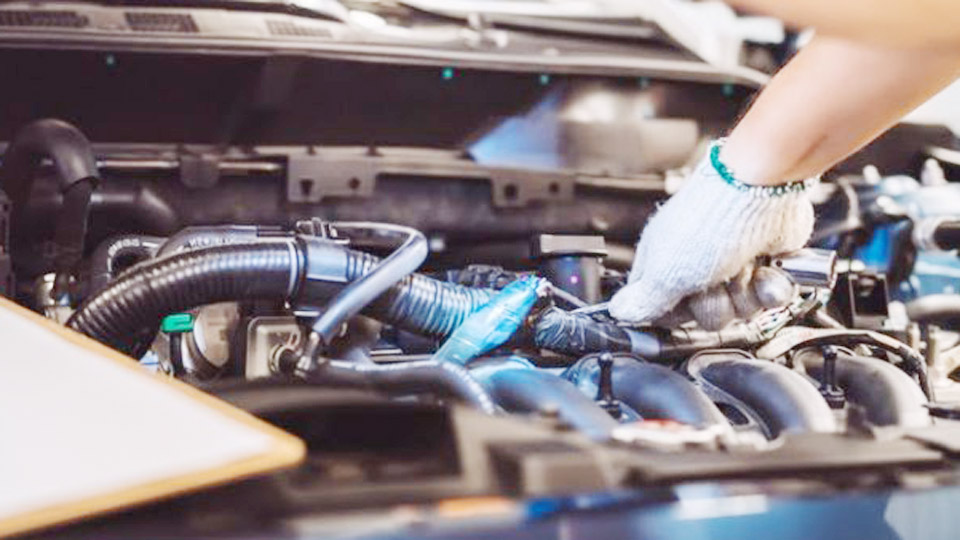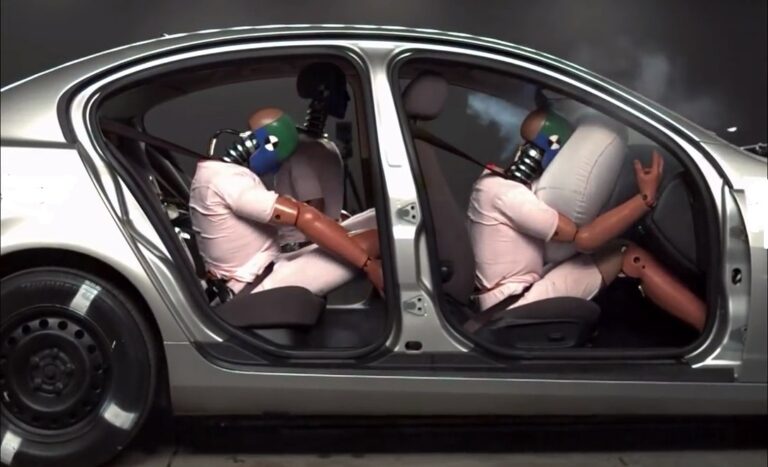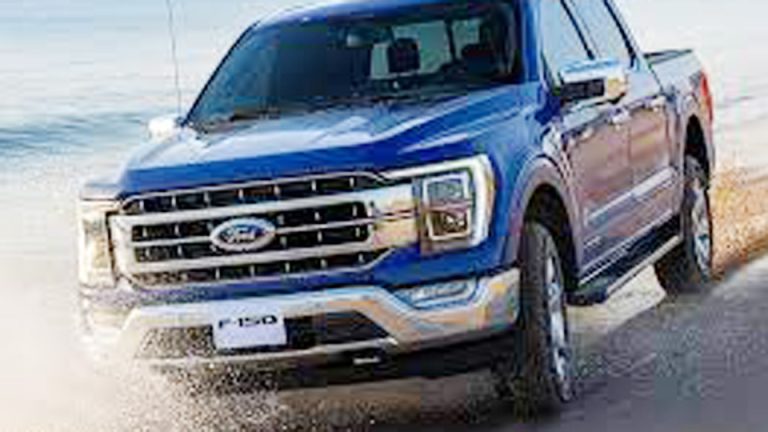A few years ago, I found myself stranded in a parking lot with a car that wouldn’t crank no matter how many times I turned the key. The lights were on, the battery was strong, but the engine was completely silent. After some trial and error—and a lot of frustration—I realized the starter motor was the culprit.
But instead of calling a tow truck right away, I decided to try a few tricks I’d picked up over the years. To my surprise, one of them actually worked—and I got the engine running without replacing the starter on the spot.
If you’ve ever been in the same situation, you know how stressful it can be. Fortunately, there are a few ways to start a car when the starter motor isn’t working, depending on the type of failure.

ymfcarparts
I’ll walk you through the methods I’ve personally used—including tapping the starter, jump-starting with a twist, and even push-starting (if you’ve got a manual). These are real-world fixes that can save you time, money, and a whole lot of stress when your car just won’t start.
What’s the Starter Motor, and Why Isn’t It Working?
Before we get to the fixes, let’s talk about what the starter motor does. It’s a small electric motor that uses battery power to crank your engine, getting the pistons moving so combustion can take over. When you turn the key, the starter’s solenoid (a magnetic switch) pushes a gear into the engine’s flywheel, and the motor spins to start the car. Simple, but critical.
So why does it fail? In my experience, starter motors can quit for a few reasons:
- Worn Brushes: The carbon brushes inside the motor wear out over time, breaking the electrical connection.
- Faulty Solenoid: The solenoid might not engage the gear or send power to the motor.
- Electrical Issues: Loose or corroded wires can starve the starter of power.
- Stuck Gear: The pinion gear might not engage the flywheel properly.
- Overheating: Heat from the engine can fry the starter over time.
I remember when my old Honda Civic wouldn’t start at the grocery store. I heard a loud click but no cranking. After some quick checks, I got it going without a new starter. Let’s explore how you can do the same.
Diagnosing the Problem
First, we need to confirm the starter’s the issue. Here’s how I approach it when a car won’t start:
- Listen for Sounds: Turn the key. A single click often means the solenoid is working, but the motor isn’t. Rapid clicking suggests a weak battery. No sound at all? Could be the solenoid or wiring.
- Check the Battery: A dead battery can mimic a bad starter. Use a multimeter to check the voltage—it should be around 12.6 volts when the car’s off. If it’s low, charge or jump the battery.
- Look at Dash Lights: If your lights and radio work but the engine won’t crank, the starter’s likely the culprit.
- Test Other Components: If the starter relay or ignition switch is bad, the starter won’t get power. We’ll check these later.
One time, my neighbor’s Toyota Corolla wouldn’t start, and he was ready to call a tow truck. I tested the battery, and it was fine. A quick tap on the starter got it going—more on that trick in a bit.
Tools You’ll Need
You don’t need a fancy garage to troubleshoot a starter issue. Here’s what I keep handy for these jobs:
- Screwdriver or wrench (for tapping the starter).
- Multimeter (to check battery and connections).
- Jumper cables or a jump starter.
- Socket set and ratchet (if you need to access the starter).
- Wire brush or sandpaper (for cleaning terminals).
- Jack and jack stands (for hard-to-reach starters).
- A friend (sometimes you need an extra set of hands).
I’ve done these fixes in parking lots with just a screwdriver and jumper cables, so don’t worry if your toolbox is basic.
Methods to Start a Car with a Faulty Starter
Alright, let’s get to the good stuff—how to start your car when the starter motor’s acting up. These are tricks I’ve used over the years, and they can often get you out of a jam.
Try a Jump Start
Sometimes, the starter isn’t getting enough juice because the battery’s weak, even if it tests okay. Grab some jumper cables and another car with a good battery. Here’s how I do it:
- Park the second car close to yours, but don’t let the cars touch.
- Connect the red jumper cable to the positive terminal of your battery, then to the other car’s positive terminal.
- Connect the black cable to the other car’s negative terminal, then to an unpainted metal surface on your car (like a bolt on the engine).
- Start the other car and let it run for a minute.
- Try starting your car.
I helped a buddy jump his Ford Focus in a mall parking lot. The starter was sluggish, but the extra power got it cranking. If this works, drive to a mechanic or charge your battery fully before deciding on repairs.
Tap the Starter Motor
This is an old-school trick that’s saved me more than once. If the starter’s brushes or solenoid are sticking, a gentle tap can free them up. Here’s what to do:
- Locate the starter—usually a cylindrical metal piece near the engine’s bottom, bolted to the transmission.
- Use a screwdriver handle or wrench to give the starter a few light taps (don’t go Hulk mode).
- Have a friend turn the key while you tap.
I used this on my sister’s Chevy Malibu when it wouldn’t start at a gas station. A couple of taps, and the engine fired up. It’s a temporary fix, though—plan to repair or replace the starter soon.
Push-Start a Manual Transmission Car
If your car has a manual transmission, you can push-start it to bypass the starter entirely. I’ve done this on my old VW Golf, and it’s a lifesaver. Here’s how:
- Find a flat or slightly downhill road (safer and easier).
- Turn the ignition to the “on” position (not start).
- Press the clutch and shift into second gear.
- Get a friend to push the car or let it roll downhill until it’s moving at about 5–10 mph.
- Release the clutch quickly, and the engine should turn over.
- Press the clutch again and give it some gas to keep it running.
This won’t work on automatic cars, and it’s not a fix—it just gets you moving. I push-started my Golf when the starter died on a camping trip, and it got me home to deal with it later.
Check and Clean Electrical Connections
Loose or corroded connections can prevent the starter from getting power. I’ve fixed many “bad” starters by cleaning terminals. Here’s my process:
- Disconnect the battery’s negative terminal to avoid shocks.
- Check the battery cables for corrosion (white, crusty stuff).
- Clean terminals with a wire brush or sandpaper and baking soda paste.
- Check the starter’s wires (usually one or two near the motor). Tighten or clean as needed.
- Reconnect everything and try starting.
I fixed a Dodge Ram’s starter issue this way. The positive cable was loose, and a quick tighten saved a tow truck call.
Test or Swap the Starter Relay
The starter relay sends power to the starter. If it’s bad, the starter won’t work. Find the relay in your car’s fuse box (check the owner’s manual). Swap it with an identical relay (like the horn relay) and try starting. If it works, buy a new relay for $10–$20. I swapped a relay on a friend’s Nissan Altima, and it was a quick, cheap fix.
When These Tricks Won’t Work
Sometimes, the starter’s too far gone for these hacks. If the motor’s windings are burnt, the solenoid’s dead, or the gears are stripped, you’ll need to repair or replace it. I tried tapping and jumping my buddy’s old Jeep, but the starter was completely fried. We ended up replacing it, which cost about $150 for the part and a couple hours of work.
Here’s a quick table to help you decide if it’s worth trying these fixes:
| Symptom | Likely Issue | Try This First | Replacement Needed? |
|---|---|---|---|
| Single click | Stuck solenoid/brush | Tap starter, clean contacts | Maybe |
| Rapid clicking | Weak battery | Jump start, charge battery | Unlikely |
| No sound | Bad relay/solenoid/wiring | Check relay, clean connections | Possible |
| Grinding noise | Worn pinion gear | Tap starter, lubricate gear | Likely |
| Slow cranking | Weak battery/starter | Jump start, clean contacts | Possible |
Safety Tips While Troubleshooting
Working on a car can be fun, but safety comes first. Here’s what I always keep in mind:
- Disconnect the Battery: Always remove the negative terminal before touching the starter or wires to avoid shocks.
- Use Jack Stands: If you’re under the car, never trust a jack alone. Stands keep you safe.
- Work in a Safe Spot: Don’t push-start on a busy road or steep hill. I learned this after nearly rolling into traffic once.
- Wear Gloves and Glasses: Grease and debris can fly around, and you don’t want them in your eyes or hands.
I once skipped gloves while cleaning a battery terminal and got corrosion all over my hands. Not fun—learn from my mistake.
Temporary vs. Permanent Solutions
Most of these methods are temporary. Tapping the starter or jumping the battery might get you to a mechanic, but they won’t fix a failing starter long-term. Push-starting is great for manuals, but it’s not a daily solution. If you clean contacts or swap a relay and the car starts reliably, you might buy some time. But if the problem keeps coming back, plan to repair or replace the starter. I got away with tapping my Civic’s starter for a week, but it eventually needed a new one.
Costs to Consider
If you’re trying to avoid replacing the starter, these fixes are cheap. Here’s a breakdown based on my experience:
| Fix | Cost (Approx.) | Time Needed |
|---|---|---|
| Jump start | $0–$50 (if you buy cables) | 10 minutes |
| Tap starter | $0 | 5 minutes |
| Push-start (manual) | $0 | 5 minutes |
| Clean connections | $5–$10 (brush, cleaner) | 30 minutes |
| Replace relay | $10–$20 | 15 minutes |
Compare that to a new starter ($75–$500) plus labor ($100–$500), and you can see why it’s worth trying these first. I saved $400 by cleaning the contacts on my neighbor’s F-150 instead of replacing the starter.
Practical Tips to Prevent Starter Issues
Want to avoid starter problems in the future? Here’s what I’ve learned from years of keeping cars running:
- Maintain Your Battery: Test it every couple of years. A weak battery strains the starter.
- Clean Terminals Regularly: Corrosion builds up fast. Scrub terminals during oil changes.
- Limit Short Trips: Constant starting wears out the starter faster. Combine errands when possible.
- Listen for Warning Signs: Clicking or slow cranking means trouble’s brewing. Don’t ignore it.
- Park Smart: Avoid starting on steep hills, which stresses the starter.
I tell my friends to treat their starter like a good pair of boots—take care of it, and it’ll last longer.
Conclusion: Get Moving Without a Tow Truck
Figuring out how to start a car if the starter motor is not working can feel like a lifesaver when you’re stuck in a parking lot or your driveway. Whether it’s a quick tap, a jump start, or cleaning some grimy connections, these tricks can get your car running without shelling out for a new starter right away. As someone who’s been wrenching on cars for years, I love the satisfaction of solving these problems with a few simple tools and some know-how. So, next time your car won’t start, don’t panic—try these methods, stay safe, and you might just save the day (and your wallet). Keep the rubber side down, and happy driving!
Frequently Asked Questions
What if tapping the starter doesn’t work?
If tapping doesn’t help, the starter might be too far gone, or the issue could be elsewhere, like a dead solenoid or bad wiring. Try cleaning the connections or swapping the relay. If that fails, test the starter with a multimeter. I tapped my buddy’s starter to no avail, and we ended up replacing it.
Can I push-start an automatic car?
No, push-starting only works on manual transmission cars. Automatics need the starter to engage the engine. If you’ve got an automatic, focus on jumping the battery or cleaning connections. I tried explaining this to a friend with an automatic Accord—he was bummed but glad to know.
How do I know if it’s the starter or the battery?
Check the battery voltage with a multimeter (should be 12.6 volts). If the lights and radio work but the engine won’t crankshaft, it’s likely the starter. Rapid clicking usually means a weak battery. I once thought my starter was bad, but a quick charge fixed it.
Is it safe to drive after a temporary fix?
It depends. If you tap the starter or jump it and it starts reliably, you can drive to a mechanic. But don’t rely on temporary fixes for long—your car could fail at a bad time. I drove my Civic for a few days after tapping the starter, but I got it fixed ASAP.
How much does a new starter cost if I can’t fix it?
A new starter costs $75–$500, depending on your car. Labor adds $100–$500, so expect $400–$1,000 total at a shop. Aftermarket or remanufactured starters are cheaper. I replaced a starter on a Focus for $150, but a BMW might cost closer to $800.




